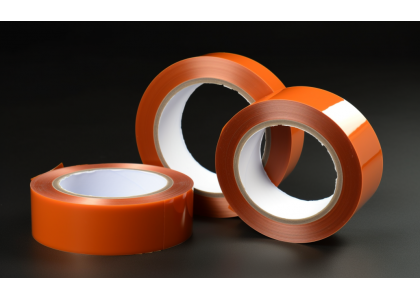
When it comes to finishing processes like powder coating, the choice of masking materials can significantly affect the quality and durability of the final product. Many people wonder whether they can use regular masking tape as a substitute for specialized options such as powder coating tape, high temperature tape, or high temp tape. This article will delve into the suitability of regular masking tape for powder coating, examining the requirements of the powder coating process and the properties of different types of masking materials.
Powder coating is a popular finishing method that provides a durable and aesthetically pleasing surface for various materials, especially metals. The process involves applying a dry powdered paint to a surface, which is then cured with heat to form a hard, protective layer. This method not only offers superior cosmetic results but also enhances the durability and resistance of the coated item to scratches, chemicals, and corrosion.
During the powder coating process, precise masking is crucial to achieving clean edges and preventing unwanted coating on specific areas. This is where the choice of masking tape becomes important. Regular masking tape, often used in general painting and DIY projects, is commonly considered for this task. However, its performance in high-temperature environments poses significant concerns.
Masking tape serves to protect areas that should not be coated, maintain clean lines, and ensure the overall quality of the finished product. For a masking tape to be effective in the powder coating process, it must meet several criteria:
Temperature Resistance: The tape must withstand the high temperatures generated during the curing process, which typically exceeds 400 degrees Fahrenheit (about 204 degrees Celsius).
Adhesive Quality: The tape must maintain a strong bond to prevent the powder from seeping under the edges, which could lead to a messy finish.
Clean Removal: After the curing process, the tape should be easily removable without leaving any adhesive residue or causing damage to the substrate.
Chemical Resistance: The tape should resist any chemicals it may encounter during the powder coating process, ensuring consistent performance.
Regular masking tape is not designed for high-temperature applications. Most traditional masking tapes are made from paper or cellophane and are coated with a pressure-sensitive adhesive. While they work well in standard painting practices where thermal exposure is minimal, they fall short in several respects when used in powder coating processes:
Low Temperature Tolerance: Regular masking tapes generally cannot endure the high temperatures of the curing process. As the temperature rises, these tapes can lose their adhesive properties, leading to lifting and peeling. This results in the tape separating from the surface, allowing powder to migrate underneath, which creates a messy finish.
Adhesive Residue: A common issue with regular masking tape is the residue it leaves behind when removed. This residue can contaminate the surface and affect the powder coating's adhesion, leading to imperfections in the final product.
Structural Integrity: Regular masking tapes are not as tough as powder coating tape. During the curing process, the heat can cause them to degrade or even disintegrate, potentially leading to contamination of the powder-coated surface.
Limited Conformability: If a project requires precise masking around curves or irregular shapes, regular masking tape may struggle to conform adequately, resulting in bleeding and uneven edges.
For effective powder coating, the following alternatives are recommended:
Powder Coating Tape: Specifically designed for the powder coating process, powder coating tape can withstand the heat of curing and remains intact, providing strong adhesion and easy removal without residue.
High Temperature Tape: Made from materials like silicone or polyimide, high temp tape can tolerate extreme heat, often up to 600 degrees Fahrenheit (approximately 316 degrees Celsius). These tapes are especially useful for applications that may experience even higher thermal exposure, offering flexibility and durability.
Polypropylene or Vinyl Tapes: While not as effective as powder coating tape, some specialty polypropylene or vinyl tapes can be used for specific masking needs, especially in low-temperature environments. However, for high-heat applications, they still do not compare to powder coating tape or high temp tape.
While regular masking tape is not suitable for powder coating processes, it does have its place in the painting and crafting world. It can be effectively used for low-heat applications, simple home projects, and areas where high precision and resilience are not required. Therefore, understanding the nature of the project at hand is crucial when selecting the appropriate tape.
In summary, using regular masking tape for powder coating is inadvisable due to its inability to withstand the high temperatures and demands of the curing process. Instead, opting for specialized masking solutions like powder coating tape or high temperature tape is essential for achieving a clean and professional finish. These dedicated tapes are designed to provide robust adhesion, resist high temperatures, and ensure easy removal without leaving behind residue. As such, investing in the proper masking materials is crucial for anyone looking to perfect their powder coating projects. Making the right choice not only enhances the quality of the finish but also ensures the longevity and durability of the coated items, making the process both efficient and effective.